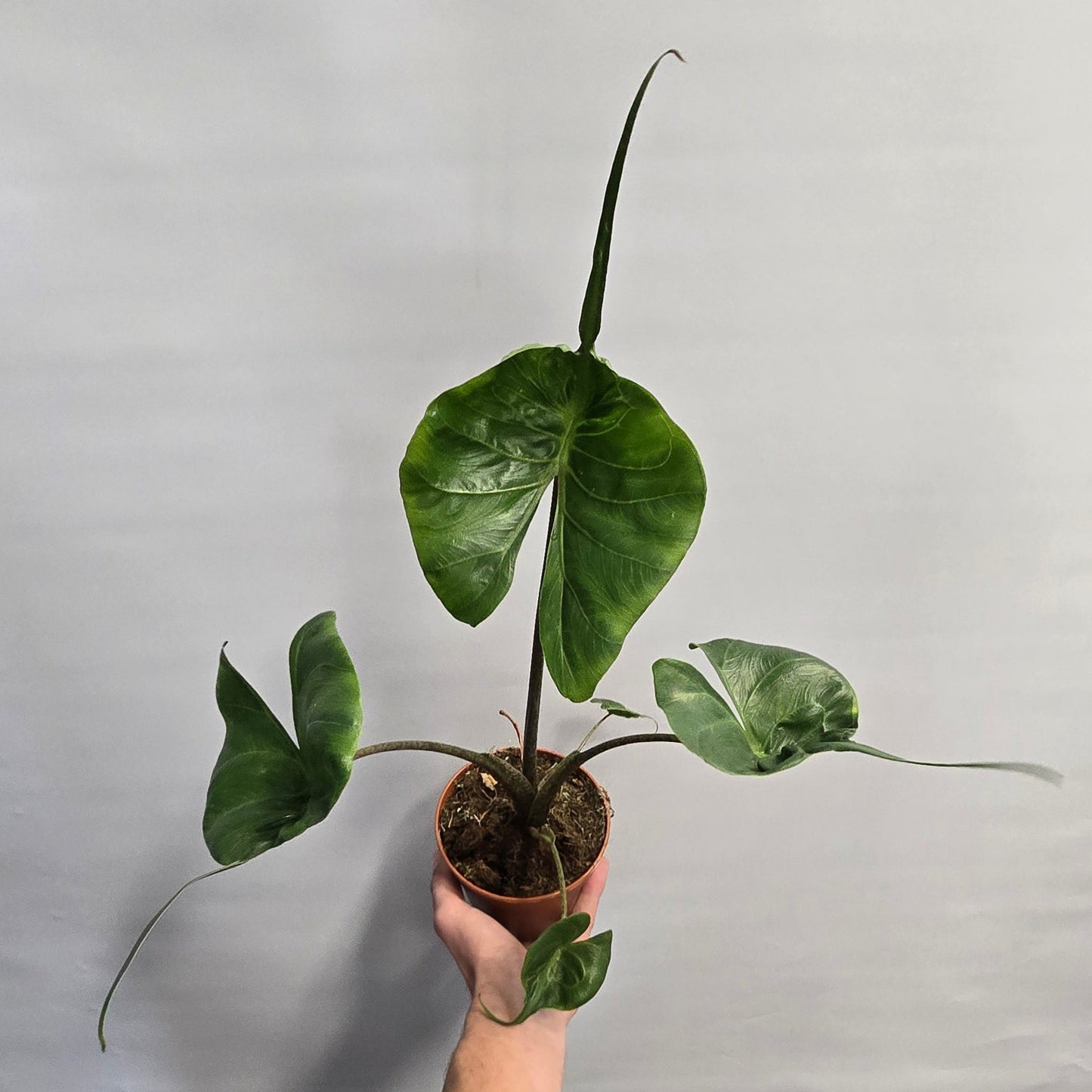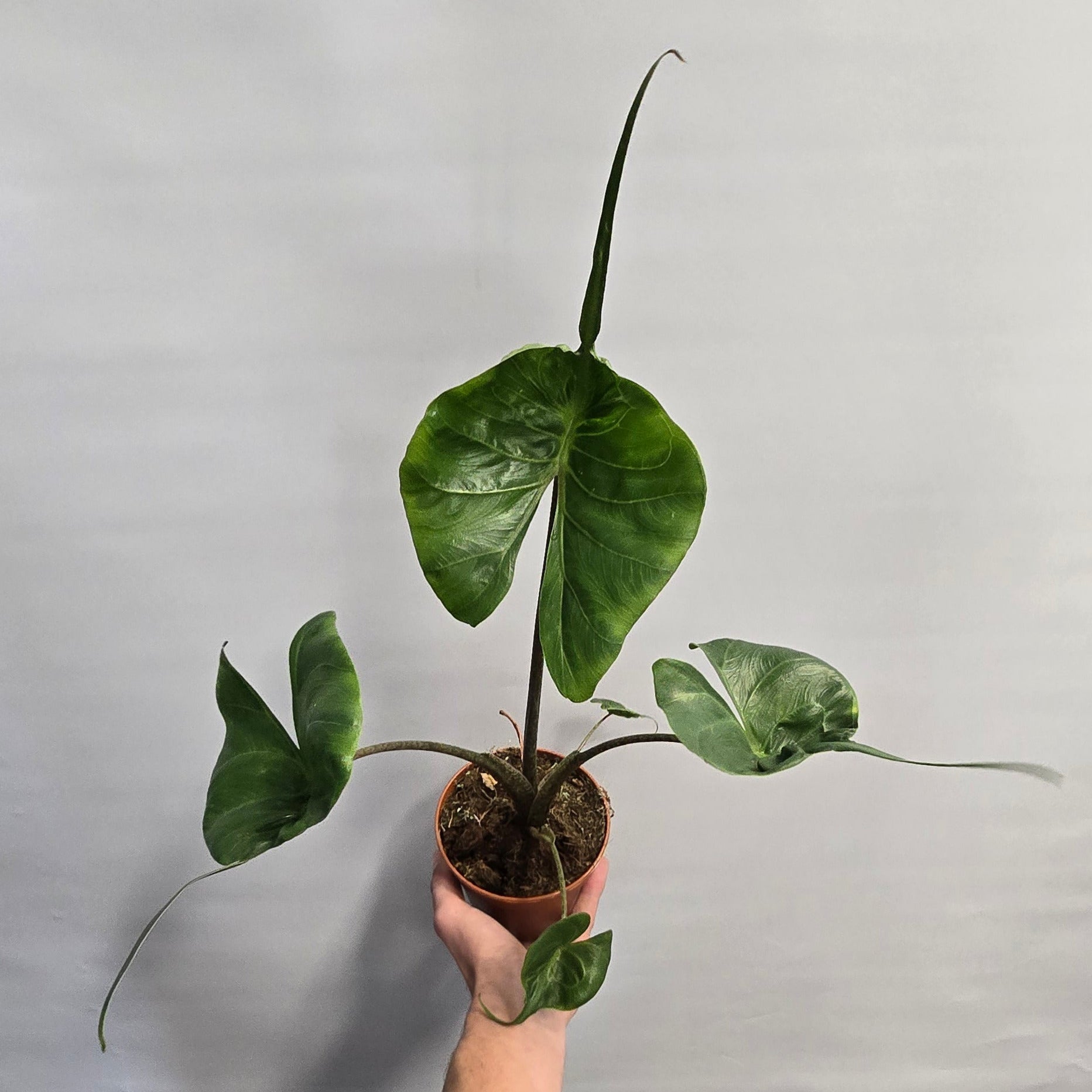My Store
Alocasia Stingray
Alocasia Stingray
Couldn't load pickup availability
Pot Size 12cm
Botanical name: Alocasia macrorrhiza ‘Stingray’
Look: Eye-catching, upright plant with glossy, arrow-shaped leaves and distinctive, tail-like tips that resemble a stingray in motion. Fast-growing with proper warmth and humidity, making it a bold indoor statement.
Pet Friendly: No
☀️ Light
Thrives in bright, indirect light—aim for a spot within 1–2 m of an east- or west-facing window.
Avoid strong midday sun, which can scorch the leaves, but also steer clear of deep shade—growth will suffer.
Supplement with a grow light if natural light is limited.
💧 Watering
Keep soil lightly moist but never soggy. Water when the top 2–3 cm of soil feels dry to the touch.
Use lukewarm water and reduce frequency in winter.
Avoid letting the pot sit in water—this plant is prone to root rot.
Yellowing leaves often point to overwatering or poor drainage.
🌡️ Temperature & Humidity
Temperature: 18–27 °C (65–80 °F); protect from drafts and sudden cold drops. Growth slows below 15 °C.
Humidity: 60% + is ideal. Use a humidifier, mist the air (not the leaves), or place the pot on a pebble tray to boost moisture levels.
🪴 Soil & Potting
Use a fast-draining, airy mix—2 parts peat or coco coir, 1 part perlite, 1 part orchid bark or coarse sand works well.
Repot every 12–18 months or when roots begin circling the pot.
Choose a pot with good drainage to prevent water-logging.
🌱 Fertilising
Feed monthly during spring and summer with a balanced liquid fertiliser (e.g. 20-20-20), diluted to half strength.
Do not feed in winter when growth slows. Overfeeding can cause tip burn or salt buildup.
✂️ Pruning & Propagation
Remove yellowing or damaged leaves at the base to keep the plant tidy.
Alocasia can go dormant in winter—leaf loss is normal; resume care as usual in spring.
Propagate by dividing tubers during repotting in early spring.
🐛 Common Pests & Problems
Pests: Prone to spider mites, aphids, and thrips—check undersides of leaves and treat with neem oil or insecticidal soap.
Crispy leaf edges: Usually caused by low humidity or inconsistent watering.
Drooping: Often a sign of overwatering, underwatering, or low temperature.


